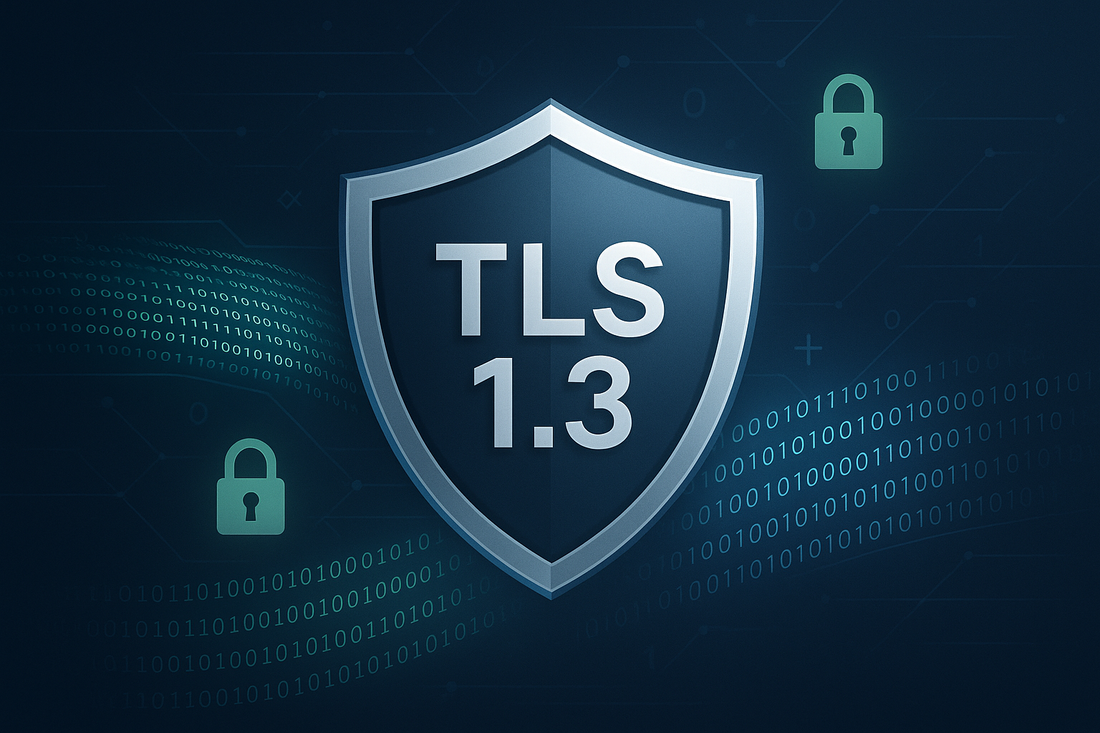
The Complete and Easy Guide to TLS 1.3
Michael FosterShare
Transport Layer Security (TLS) 1.3 represents the latest evolution in cryptographic protocols, offering enhanced security and improved performance for SSL Certificate implementations.
As the successor to TLS 1.2, this version introduces significant changes that make encrypted connections both faster and more secure.
Trustico® recognizes TLS 1.3 as the current gold standard for protecting data in transit across the internet.
Key Improvements in TLS 1.3
TLS 1.3 streamlines the handshake process between clients and servers, reducing the number of required round trips from two to one in most cases.
This optimization results in significantly faster connection times while maintaining robust security.
The protocol removes support for outdated cryptographic algorithms, including RC4, DES, 3DES, AES-CBC, SHA-1, and RSA key transport, which were vulnerable to various attacks. Instead, TLS 1.3 mandates the use of perfect forward secrecy through ephemeral key exchanges.
The new version introduces encrypted Server Name Indication (SNI), providing additional privacy by preventing observers from seeing which websites users are accessing. This feature is particularly important for organizations using SSL Certificates across multiple domains on shared hosting environments.
TLS 1.3 also implements a Zero Round Trip Time (0-RTT) mode, enabling resumed connections to begin immediately without additional handshake steps.
Implementation Requirements
To properly implement TLS 1.3 with SSL Certificates, servers must support specific cipher suites.
The protocol requires authenticated encryption with associated data (AEAD) algorithms, specifically AES-GCM and ChaCha20-Poly1305. These modern encryption methods provide superior security compared to older cipher suites.
Organizations must ensure their web servers and applications are updated to support these requirements.
Certificate Authorities like Trustico® issue SSL Certificates that are fully compatible with TLS 1.3 implementations.
However, the server infrastructure must be properly configured to take advantage of the protocol features. This includes updating web server software, ensuring proper cipher suite configuration, and maintaining current SSL Certificate installations.
Security Benefits and Performance Advantages
TLS 1.3 eliminates vulnerable encryption methods and streamlines the protocol, reducing the attack surface significantly.
The mandatory perfect forward secrecy ensures that even if a private key is compromised in the future, previous communications remain secure. This represents a crucial advancement in SSL Certificate security, particularly for organizations handling sensitive data.
Performance improvements in TLS 1.3 are substantial, with handshake latency reduced by up to 50% compared to TLS 1.2.
This enhancement is particularly noticeable in mobile networks and high-latency connections.
The 0-RTT feature allows returning clients to send data immediately, further reducing connection establishment time while maintaining security through carefully implemented safeguards.
Migration Considerations
Organizations transitioning to TLS 1.3 should conduct thorough testing across their infrastructure. While the protocol is backward compatible, some legacy systems may require updates or configuration changes.
IT teams should review their SSL Certificate deployment processes, ensuring proper implementation of the new protocol features and removal of deprecated encryption methods.
Regular security assessments and SSL Certificate management become even more critical with TLS 1.3 implementations.
Organizations should maintain detailed documentation of their cryptographic configurations and establish procedures for regular updates and security patches.
Trustico® recommends implementing automated monitoring systems to ensure continued compliance with TLS 1.3 standards and optimal SSL Certificate performance.



